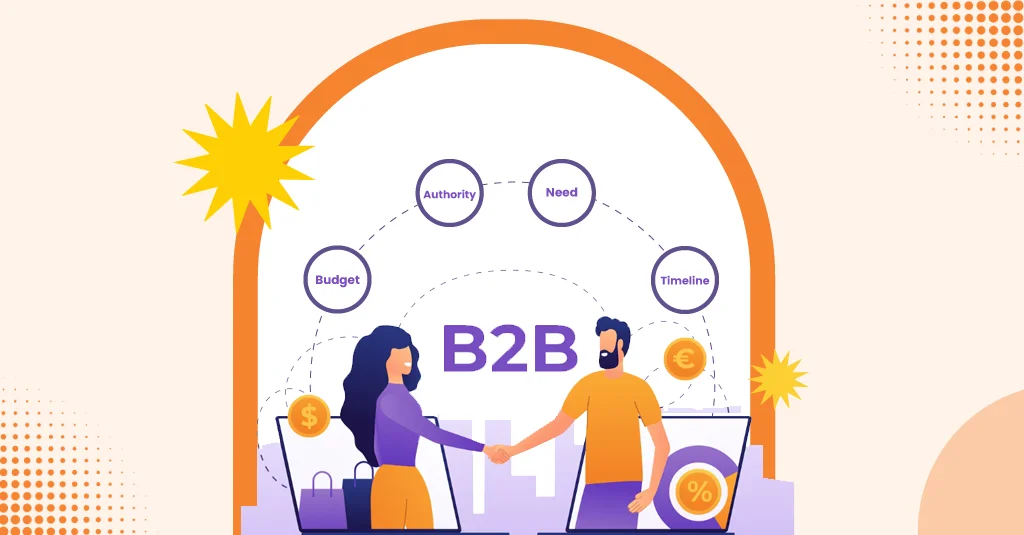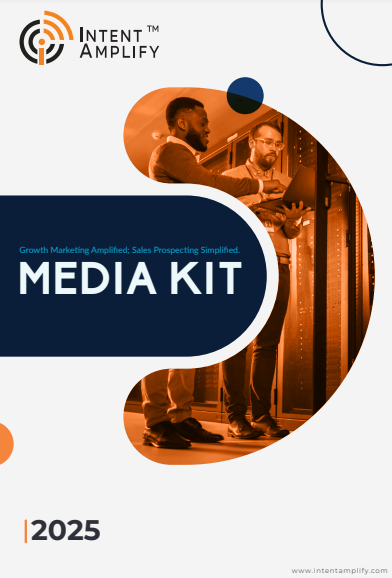
How to Use the BANT Framework in B2B Lead Generation
- Last updated on: August 18, 2025
When it comes to B2B lead generation, one of the worst stumbling blocks for sales and marketing teams is determining which prospects they should actually be following, and what the net worth of the requirement may be. As budgets are shrinking and buying groups are getting larger, qualifying leads well has turned from an option into a necessity. BANT Framework defined it as Budget, Authority, Need, and Timeline. It will continue to be one of the easiest ways to assess opportunities. In fact, some may say it’s an “old-school” way of looking at things.
The BANT Framework can help you sharpen lead qualification, simplify and expedite pipeline development, and help align sales with marketing. Provided it’s utilized in a strategic way in today’s digital-first buying environment, however. In this article, we’re going to discuss how B2B companies can leverage the BANT Framework to enhance lead generation results and speed up revenue.
What is the BANT Framework?
Originally, the BANT framework was developed by IBM to create a structured approach for sales teams to qualify whether a lead was worth pursuing. The BANT framework is structured around four qualification criteria:
- Budget: Does the prospect have money to spend on your solution?
- Authority: Is the person you’re speaking to an influencer or decision-maker at buying time?
- Need: Does the prospect clearly have a problem you can solve with your product or solution?
- Timeline: Is there a reason to act now versus later, or does the prospect have a specific purchasing timeline?
In the modern B2B lead generation context, BANT is primarily used to limit friction between marketing and sales by helping marketing teams qualify and pass along leads that are ‘sales-ready.’ But it is more than just checking all the boxes for the criteria. It is important to recognize that buyers today are more educated than ever before; often, the buying decision must be made by multiple stakeholders, and BANT must have some flexibility. It is also important to evaluate intent-based data, engagement signals, and organizational dynamics of the buying group to make sure qualified leads are not lost.
Why BANT Still Matters in Modern B2B Lead Generation
Some marketers claim that, in the age of account-based marketing (ABM), predictive analytics, and intent data, the BANT framework is antiquated. However, BANT has not lost its relevance. It has evolved. B2B buyers are more empowered. And they have an abundance of information at their disposal long before they have a direct conversation with sales. Qualification of leads has never been more important.
BANT provides a simple framework to evaluate opportunities and enables sales teams to reduce wasted cycles on unqualified leads. For example, a prospect may engage strongly and seem highly promising, but if the budget is misaligned or if the decision-maker is not involved, chances are low that the deal will close. BANT validates the fundamentals and ensures these deal bottlenecks do not arise.
More importantly, BANT has more value when combined with digital signals. Intent data, CRM scoring, or marketing automation can all increase the BANT framework, allowing teams to assess not only if a lead is qualified, but also their readiness to buy. In turn, sales teams can prioritize outreach, customize their messaging, and funnel people faster. In conclusion, BANT has evolved from a strict checklist to a flexible framework that, when used together with current data, makes lead generation smarter and ultimately more predictable.
Applying BANT Framework at Different Stages of the Funnel
The BANT framework’s power is in its flexibility through the buyer’s journey. Rather than treating it as a one-time point of qualification, B2B marketers who are successful use BANT at different phases of the funnel progressively.
Top of Funnel (TOFU): Awareness and Interest
At the top of your funnel, the prospect is starting to explore problems and researching the solution. At the TOFU stage, BANT can be increased or lightened. You are simply identifying if the company has an identified potential need, and whether they fit your target market profile at all. At the TOFU stage, you don’t want to ask any questions about budget, as it can be too early. What we want to do is identify buyer pain point items and determine if they have buyer context, which gives a signal if they qualify, and if we should keep nurturing.
Middle of Funnel (MOFU): Consideration and Evaluation
In the MOFU stage, as the prospect starts to engage with case studies, demos, or webinars, the BANT qualification process becomes more effective. You can start interrogating the timelines of any potential purchase decisions, the potential budget/price range, and what level of authority the contact has in their buying group. Marketing automation platforms also can give signals to intent and engagement and provide clues of authority, and urgency all without you pushing to hard for qualification and being risk of disqualifying them too soon in the process.
Bottom of Funnel (BOFU): Decision and Purchase
This is where the BANT framework really kicks in. Sales should verify the presence of decision-makers, that budgets have been obtained, and that the equipment will be purchased in a schedule congruent with your sales process. This stream creates a great opportunity to maximize resources by investing in deals with the highest close probabilities.
When organizations aligned BANT criteria by funnel stages, they avoided the pitfalls of disqualifying too early or spending time on unqualified accounts. They implemented a living, stage-appropriate qualification model to push forward, where sales and marketing are working together.
Combining BANT Framework with Intent Data and Sales Intelligence
Although BANT is still a tried and true framework, B2B lead generation requires more than just checking off a set of questions with a prospect. Decision-making today is much more complex, with multiple stakeholders and longer sales cycles. This is where intent data and sales intelligence build on BANT to make it more predictive and less intrusive.
Building Intent Data
Rather than having to wait for prospects to disclose their budget or timeline, intent data uncovers buying signals sooner. For example, if an account is engaged in researching your solution category, reading competing product comparisons, and consuming relevant industry content with increasing interest, there is a greater degree of readiness to solve a problem. With intent data layered onto BANT, we have a way to validate the need and timeline, without coming off as leading or forced qualification questions of the prospect.
Increasing Authority and Budget with Sales Intelligence
Sales intelligence tools use content to enrich prospective profile attributes, such as org charts, funding activity, or buying committee, to accurately identify the key decision-makers, influencers, or procurement stakeholders (making the authority validation task easier). Financial intelligence, including funding rounds or recent acquisitions, gives early indicators of budget availability before any direct conversation.
Example:
Imagine a software vendor that is focusing on mid-market financial firms. Instead of cold qualifying using BANT, the marketing or sales team would be able to leverage intent (understanding firms researching compliance automation). Sales intelligence would indicate the CIO and CFO were likely involved, and there was a working budget expansion tied to regulatory activity. With BANT questions as part of the conversation, they would engage, making the questions relevant and timely to the sales conversation.
By augmenting BANT with real-time data signals, organizations can transform it from a rigid framework into a dynamic, intelligence-driven qualification model that accelerates lead-to-revenue conversion.
Conclusion: BANT Framework Qualifications in your Deal Forecasting
A report published by McKinsey stated that 67% of all B2B deals fail because of poorly qualified leads. A heavy realization for many revenue teams. This is why every revenue team requires a dynamic qualification platform like BANT. Particularly if combined with relevant real-time insights and sales stocks. At each of these funnel stages, BANT helps your teams prioritize the leads that have a real buying potential, infuse their conversation with authority and urgency, and analyze marketing and sales with the same criteria. BANT is not dead, but it can be purposed as a better qualification engine. It is more structured with empathy, faster with insight, thus allowing modern B2B revenue teams to operate smarter and generate higher-converting leads.
FAQs
1. Is the BANT framework qualification still relevant in today’s B2B lead generation?
Yes, especially if modernized. Some of the latest research showed that organizations using BANT have had a 30% higher lead conversion rate, with over 50% of salespeople still having it as a reliable selling criterion.
2. How does BANT operate across the funnel?
At the top, it will filter at a good level for leads based on potential need. The mid-funnel, it will help provide authority and budget. At the bottom, it confirms the timeline and alignment. Thus, providing three filters before a lead transitions to a sales outreach team. Sense check based on qualification potential. So that only found-qualification leads can potentially move quickly to sales.
3. What’s the benefit of combining the BANT Framework with intent data and sales intelligence?
It transforms BANT from a checklist into an intelligence-driven model. Intent data validates need and urgency earlier, while sales intelligence enriches authority and budget signals. It makes the qualification more efficient and accurate.
4. How can leaders avoid making the BANT Framework feel transactional?
Focus on turning BANT into a conversational tool. Align BANT questions with empathy, listening, and business value, positioning qualification as a service to prospects.
5. What’s one quick win for using BANT more effectively?
Start with predictive signals. Use engagement trends and firmographic data to pre-qualify leads before even asking budget or timeline questions. It makes qualifications feel timely and relevant.



